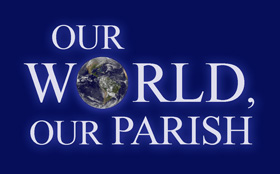Key points:
- Recent efforts by parts of The United Methodist Church in Europe to leave the denomination raise questions about autonomy, disaffiliation and what church polity says.
- Autonomy is a church body’s desire to make its own decisions. Disaffiliation is a church body’s desire to separate from another part of that body. The two may coincide.
- Autonomy and connection can go hand in hand, as seen in different ways in Argentina and the Philippines.


Photo © Hector Amador.
Commentaries
Like annual conferences in the United States, some European conferences are struggling with conflicts, particularly over sexuality in the church. Some have chosen to become autonomous, while others have chosen disaffiliation.
The Czech Annual Conference is an example. During annual conference sessions in May, delegates voted to become an autonomous church, no longer part of The United Methodist Church. To become autonomous, the Czech church will follow the procedure laid out in Paragraph 572 of the denomination’s Book of Discipline. The Eurasia Episcopal Area also chose to follow Paragraph 572.
Other branches of Methodism in Europe have selected different methods to separate from the denomination – a unilateral declaration in the case of Bulgaria and Slovakia and a process negotiated with the central conference for Estonia. Other branches of The United Methodist Church in Europe or elsewhere could similarly decide to use Paragraph 572 to become autonomous.
These recent developments raise theological and polity questions. What is an autonomous church? Where did Paragraph 572 originate? Is autonomy just another name for disaffiliation? What does autonomy mean for the future of connectionalism?
“Autonomy” means “self-ruling.” An autonomous church makes its own polity. Differing degrees of autonomy can be practiced by differing bodies within the church. A congregation has autonomy over its building-use policies and program calendar. An annual conference has autonomy over its clergy deployment.
An “autonomous church” is generally understood as a separate body or denomination that makes its own polity and policy decisions without additional input by a larger church body. The Discipline’s Paragraph 570 defines an “autonomous Methodist church” as “a self-governing church of the Wesleyan tradition.”
Paragraph 572 allows individual or groups of annual conferences outside the U.S. to self-govern in all matters, no longer subject to the decision-making of the United Methodist General Conference. For a church to become autonomous by following Paragraph 572 requires annual conference, central conference and General Conference approval. (For more on that process, see this primer.)
The earliest version of Paragraph 572 was added to the Discipline in 1964 in response to the desire by branches of The Methodist Church in Asia and Latin America to become autonomous. These requests came at a time when former colonies were asserting their political independence and, therefore, their autonomy in political matters. In many cases, the church also sought religious autonomy. (For more on that history, see “Autonomy, international division mark United Methodist tradition” and “The History of the Global Connection, Part 2.”)
While the wave of church autonomy related to decolonization crested in the 1970s, the provision for autonomy remained in the Discipline. It was most recently used in 2012 to allow the Swedish Annual Conference to enter into an ecumenical union with the Mission Covenant and Baptist denominations in that country.
Previous instances stemmed from political realities in secular society or from the desire for ecumenical merger, but the current requests are related to conflicts over sexuality within the church. Especially in the case of Russia, other political and cultural factors are also at work.
That difference in intention raises a theological danger: that we will conflate autonomy and disaffiliation.
Autonomy is a church body’s desire to make its own decisions. Disaffiliation is a church body’s desire to separate from another part of that body. The two impulses may coincide. Separation from a church body allows independent decision-making, and doing so when those decisions once were jointly made implies some separation. Yet, autonomy and disaffiliation are not the same.
Autonomy and connection can go together. This expectation is reflected in language from Paragraph 572 and surrounding paragraphs. “Affiliated autonomous Methodist churches” maintain a formal connection to The United Methodist Church, whereas “affiliated united churches” result when Methodists merge into an ecumenical body.
Every autonomous or united church formerly connected to The United Methodist Church or The Methodist Church is now an affiliated Methodist or affiliated united church. In the past, branches of Methodism sought to become autonomous with the assumption that connection with The United Methodist Church would continue through nonvoting participation at General Conference, the Council of Bishops, agencies and other means.
Subscribe to our
e-newsletter
Autonomy and connection can go hand in hand. Bishop Aldo Etchegoyen led a portion of the church that became autonomous from The United Methodist Church (the Evangelical Methodist Church, Argentina), while Bishop Emerito Nacpil led a portion of the church – the Philippines Central Conference – that continued to be part of the denomination.
Etchegoyen called for “connectionality with responsibility,” in which each church is responsible for its own identity and its own government but also shows its “historical, theological and ecclesial unity.”
“The vision of a global church,” Nacpil wrote, “relates or links autonomy and connectionality organically and essentially. In a global church, one cannot have one without the other.”
While it does not involve Paragraph 572, the current conversation around regionalism is about autonomy and connectionalism within The United Methodist Church. It will undoubtedly take a good deal of conferencing, consulting and time for The United Methodist Church to propose, test and refine theological and practical answers. That is as it should be. But our process of grappling with these questions will be aided if we understand autonomy as a positive theological quality that needs to be paired with, rather than opposed to, connectionalism.
For more historical and theological insights on autonomy and connectionalism, see “Church Autonomy and the Commission on the Structure of Methodism Overseas (COSMOS): A UM & Global Collection.”
Scott is the director of mission theology in the Office of the General Secretary at United Methodist Global Ministries.
News media contact: Tim Tanton or Joey Butler at (615) 742-5470 or [email protected]. To read more United Methodist news, subscribe to the free Daily or Weekly Digests.



